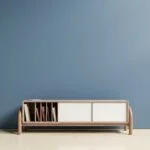Why is home decor so expensive? The answer to this question involves a multitude of factors that contribute to the pricing of home decor items. From the perception of quality to material costs, design and innovation, retail markup, and sustainable production practices, there are many elements that impact the price tag on home decor.
The perception of quality plays a significant role in the pricing of home decor. Consumers often associate higher prices with superior quality, leading to an increased willingness to pay more for items perceived as luxurious or well-made. This connection between price and perceived quality influences pricing strategies within the home decor industry and contributes to the overall cost of these products.
Material matters when it comes to the price of home decor. The cost of materials directly impacts the pricing of items, particularly those made from high-quality or unique materials. Whether it’s luxury fabrics for upholstery, rare woods for furniture, or high-grade metals for decorative accents, the expense of these materials contributes to higher prices for home decor products.
Material Matters
Quality vs. Cost
One of the main reasons why home decor items can be so expensive is the cost of materials used in their production. In many cases, higher quality materials are utilized to create durable and visually appealing home decor products.
These materials come at a higher price, which naturally drives up the overall cost of the finished item. Consumers often associate higher prices with better quality, leading to a perception that expensive home decor items are superior in terms of craftsmanship and longevity.
Importance of High-Quality Materials
The use of high-quality materials not only affects the perceived quality of home decor items but also impacts their functionality and aesthetic appeal. For example, furniture made from solid wood or high-grade upholstery fabric tends to last longer and maintain its visual appeal, thus justifying the higher cost. Additionally, certain materials such as natural stone, brass, and silk are considered luxurious and are specifically sought after by consumers looking for upscale home decor options.
Rising Material Costs
Another factor contributing to the high cost of home decor is the rising price of raw materials. Fluctuations in material costs due to global supply chain issues, trade tariffs, or environmental factors directly impact the retail prices of home decor items. Manufacturers and retailers often have to adjust their pricing strategies to account for these increased material costs, ultimately affecting consumers who end up paying more for their desired home decor products.
The cost of materials used in home decor production plays a significant role in determining product pricing. From raw material expenses to ensuring high-quality standards, manufacturers invest considerably in securing premium resources to create desirable home decor items. Understanding how material costs impact pricing helps consumers appreciate the value behind expensive home decor products and make informed purchasing decisions.
Design and Innovation
When we look at the question, “Why is home decor so expensive?” one key factor to consider is the investment that goes into design and innovation. Home decor products often come with a higher price tag due to the extensive research and development that goes into creating unique and innovative pieces. Here are some reasons why this investment impacts the pricing of home decor:
- Quality and Uniqueness: Home decor brands invest in research and development to create products that stand out in terms of quality and design. This uniqueness often comes with a higher price point, as consumers are willing to pay more for items they perceive as special and distinct.
- Innovation Costs: Developing new materials, techniques, and technologies for home decor requires significant financial resources. These innovations drive up production costs, which ultimately get reflected in the pricing of the end products.
- Sustainability Efforts: Many home decor companies invest in sustainable practices, such as eco-friendly materials or ethical production methods. While these efforts are important for environmental and social reasons, they can also contribute to higher product costs.
In addition to these factors, design and innovation also play a role in setting trends within the home decor industry. Brands that set trends often have a competitive advantage, allowing them to justify higher prices for their cutting-edge designs. It’s important to recognize that while design and innovation contribute to the expense of home decor, they also drive growth and advancement within the industry.
Ultimately, the investment in research and development is essential for creating unique and high-quality home decor products. While it may contribute to higher prices, it also reflects a commitment to excellence and creativity within the industry.
Production Costs
When it comes to understanding why home decor is so expensive, it’s important to consider the various production costs involved in the manufacturing and production of these items. From materials to labor, there are many expenses that contribute to the overall price tag of home decor products.
Cost of Materials
One of the primary factors that impact the cost of home decor is the price of materials. Whether it’s high-quality wood for furniture, luxurious fabrics for upholstery, or premium metals for decorative accents, the cost of materials can significantly drive up the overall price of home decor items. In some cases, rare or exotic materials can also contribute to a higher price point.
Labor and Overhead Costs
The labor and overhead costs associated with producing home decor items also play a significant role in determining their pricing. Skilled artisans and craftspeople who create handmade or custom pieces often command higher wages, while manufacturing facilities come with their own set of expenses such as rent, utilities, and equipment maintenance. All of these costs must be factored into the final price of home decor products.
Quality Control and Assurance
Another aspect that adds to the production costs is quality control and assurance measures. Brands that prioritize craftsmanship and attention to detail may invest more in rigorous quality control processes to ensure that their products meet certain standards. This commitment to quality can result in higher prices for consumers but also provides a level of assurance regarding the durability and reliability of the home decor items.
Overall, when examining production costs as a factor influencing the pricing of home decor products,
Branding and Marketing
When it comes to the pricing of home decor, branding and marketing strategies play a significant role in influencing the cost of items. The way a brand positions itself in the market, and how it communicates its value to consumers can have a direct impact on pricing. Here are some key factors that contribute to why home decor is so expensive:
1. Brand Reputation: Established brands with a strong reputation for quality and design often command higher prices for their products. This is because consumers are willing to pay more for the assurance of getting a well-designed, durable, and stylish item from a trusted brand.
2. Marketing Campaigns: The costs associated with marketing campaigns also contribute to the overall price of home decor items. Brands invest heavily in advertising, influencer partnerships, and other promotional activities to create visibility and desirability for their products, which ultimately adds to the final price tag.
3. Exclusive Partnerships: Many home decor brands collaborate with designers or artists to create exclusive collections or limited-edition pieces. These collaborations often come with a premium price due to their unique and desirable nature.
The Influence of Trends
The home decor industry is heavily influenced by ever-changing design trends, and this has a significant impact on the pricing of items within this market. As new trends emerge and evolve, consumers are often willing to pay a premium for products that align with the latest styles and aesthetics. This demand for trendy home decor items can drive up prices as retailers and manufacturers capitalize on the popularity of certain designs.
One reason why home decor is so expensive is that companies invest considerable resources in staying ahead of or keeping up with design trends. This includes research and development to create new and innovative products that appeal to changing consumer tastes. Additionally, these companies often collaborate with designers and artists to produce exclusive pieces that cater to niche markets or capitalize on specific trends, adding exclusivity to their offerings.
Moreover, the influence of design trends on pricing can also be seen in how quickly certain items become outdated. As new trends emerge, older styles may lose their appeal, leading to markdowns on unsold inventory or clearance sales. This cycle of obsolescence creates a sense of urgency among consumers to purchase trendy items at higher prices before they are replaced by newer designs, further driving up the cost of home decor products.
| Influence | Impact |
|---|---|
| Perceived quality | Higher prices due to demand for trendy items |
| Research & Development | Investment in staying ahead of design trends increases production costs |
| Obsolescence | Older styles lose their appeal quickly, leading to price increases for newer designs |
Retail Markup
When it comes to understanding why home decor is so expensive, one crucial factor to consider is the role of retail markup. Retail markup refers to the amount added to the cost price of a product in order to cover the retailer’s expenses and generate a profit. In the home decor industry, retail markup plays a significant role in determining the final price that consumers pay for items such as furniture, lighting, and decorative accessories.
Retailers often apply a markup to their products in order to cover various expenses such as rent, employee salaries, utilities, and other operational costs. Additionally, retailers also factor in desired profit margins when determining the retail price of home decor items. This means that consumers end up paying a higher price for these products due to the inclusion of retail markup.
It’s important for consumers to be aware of how much retail markup contributes to the overall cost of home decor items. By understanding this aspect of pricing, individuals can make more informed decisions about where to shop and how much they are willing to spend on different pieces for their homes.
| Factor | Impact |
|---|---|
| Retail Markup | Contributes significantly to the final price of home decor items |
| Retailer Expenses | Included in retail markup to cover operational costs |
| Profit Margins | Determine how much retailer adds on top of cost price for desired profits |
Sustainable and Ethical Practices
In conclusion, the high cost of home decor items can be attributed to a variety of factors, all of which contribute to the perceived value and quality of these products. The perception of quality plays a significant role in pricing, as consumers often equate higher prices with superior craftsmanship and materials. Additionally, the use of high-quality and sustainable materials impacts the cost of production, which is then reflected in the price tag.
Moreover, design innovation and the investment in research and development are also major contributors to the expense of home decor items. Companies that prioritize unique and cutting-edge designs invest heavily in product development, which inevitably affects the pricing of their offerings. Furthermore, sustainable and ethical production practices also influence the pricing of home decor items. Brands that prioritize environmentally friendly manufacturing processes and fair labor practices often incur higher costs, which are reflected in the final price.
Retail markup is another factor that contributes to the overall expense of home decor items. Retailers must cover their own expenses and make a profit while selling these products, leading to an additional increase in price for consumers. In light of these various considerations, it becomes evident why home decor is so expensive – from material costs to design innovation to retail markup, numerous factors play into the final pricing of these products.
Frequently Asked Questions
Why Is Home Decor Expensive?
Home decor can be expensive for a variety of reasons. Quality materials, craftsmanship, and designer brands all contribute to higher prices. Additionally, custom or unique pieces often come with a premium price tag.
Why Does Interior Design Cost So Much?
Interior design costs can add up due to the expertise and time required to create a cohesive and well-designed space. Professional interior designers have knowledge of furniture, fabrics, layouts, and more, which can justify their fees.
Is It Worth It to Decorate Your House?
Decorating your house can be worth it for many reasons. A well-decorated home can improve your overall quality of life by creating a comfortable and visually appealing environment. It can also increase the value of your home if done tastefully and with quality in mind.

I’m thrilled to be your companion on this exciting journey through the world of home decor and design. With a passion for turning houses into homes and a keen eye for the finer details, I’m here to help you transform your living spaces into beautiful, functional, and meaningful havens.





